Economy

Global Steel Production Through November
Written by Peter Wright
December 23, 2020
The United States experienced the least growth among the 10 major steel-producing nations in the three months through November, according to data from the Organization for Economic Cooperation and Development (OECD).
Figure 1 shows annualized monthly global steel production on a three-month moving average (3MMA) basis and capacity utilization since January 2000 based on capacity data from the OECD. Capacity utilization in November on 3MMA basis was 80.4 percent. On a tons-per-day basis, production in November was 5.275 million metric tons. This was the second highest month behind the record set in June 2019 of 5.318 million metric tons.
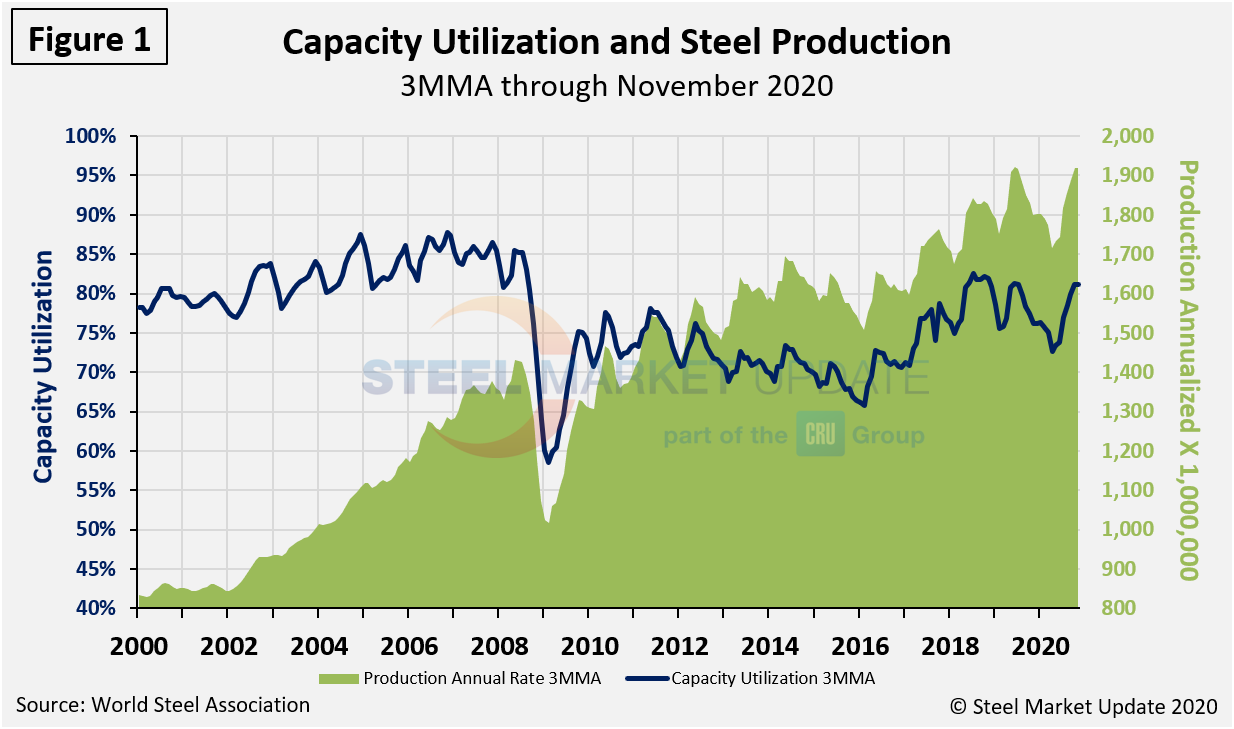
Figure 2 shows the year-over-year growth rate of the 3MMA of global production since January 2013. Growth in three months through November on a year-over-year basis was positive 6.6 percent, up each month from negative 9.2 percent in June 2020.
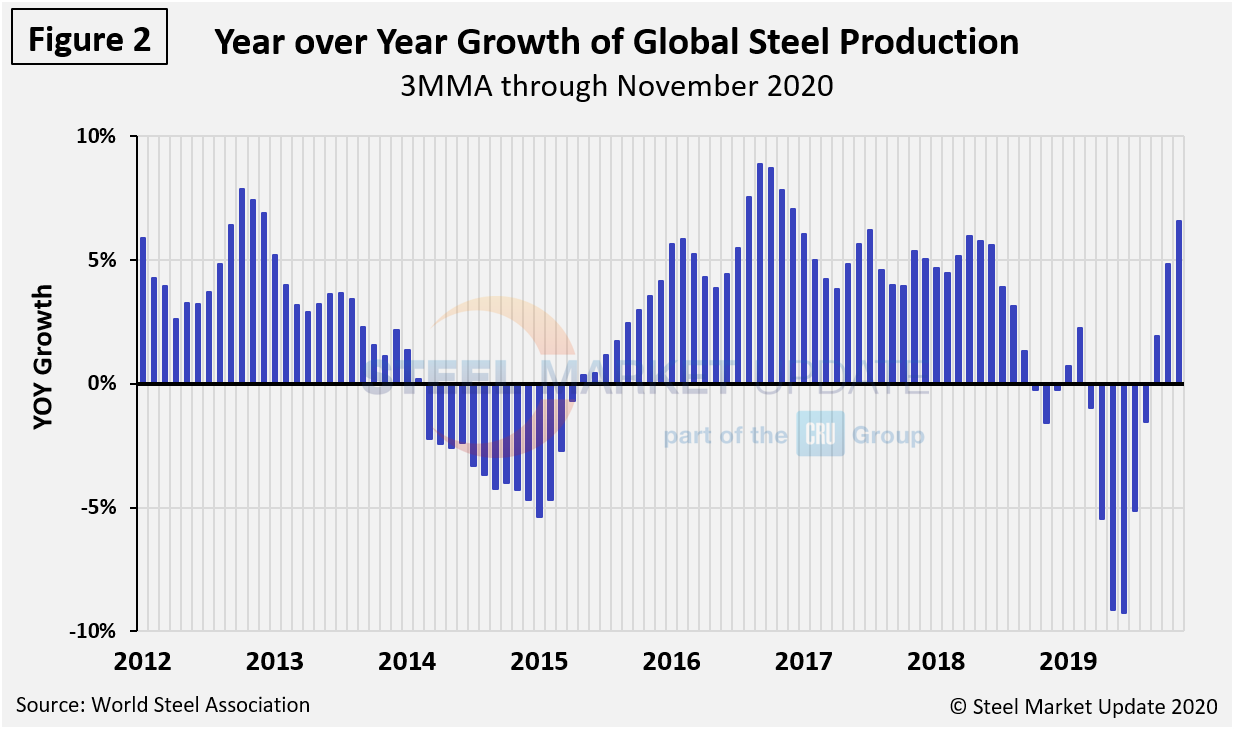
Table 1 shows global production broken down into regions, the production of the top 10 nations in the single month of November, and their share of the global total. It also shows the latest three months and 12 months of production through November with year-over-year growth rates for each period. Regions are shown in white font and individual nations in beige. The world overall had positive growth of 6.6 percent in three months and negative 0.6 percent in 12 months through November. When the three-month growth rate is higher than the 12-month growth rate, as it was in November, we interpret this to be a sign of positive momentum. On the same basis in November, China grew by 11.4 percent and 6.4 percent, and therefore also had positive momentum. Table 1 shows that North America was down by 11.9 percent in the three months through November. Within North America, production was down by 14.2 percent in the U.S., down by 14.5 percent in Canada, but up by 1.4 percent in Mexico. (Canada and Mexico are not shown in Table 1 and the North American total includes Cuba, El Salvador and Guatemala.) Of the top 10 nations shown in Table 1, the U.S. had the worst growth performance at the three-month level.
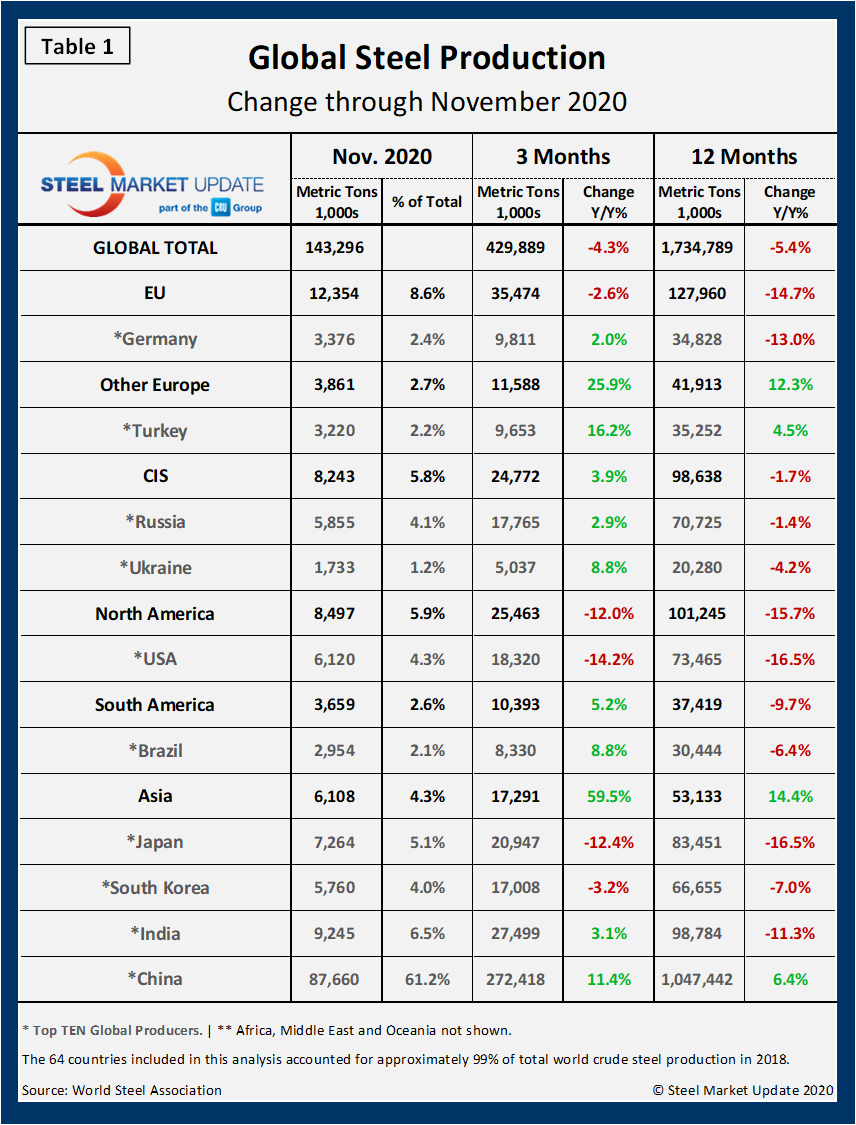
In the 12 months through November, 101.4 million metric tons were produced in North America, including 73.4 million tons in the U.S., 11.0 million tons in Canada and 16.6 million tons in Mexico. Based on the latest data from the OECD, U.S. capacity in 2019 was 109.7 million metric tons and capacity utilization in that year was 80.0 percent.
Figure 3 shows China’s production since 2005. In the single month of August, China’s steel production was at an all-time high of 94.8 million tons. Production declined each month from September through November to 87.7 million tons. China’s capacity is now 1.152 billion metric tons, a reduction from 1.215 billion tons in January 2015. China’s November capacity utilization was 92.9 percent, up from 67.3 percent in January 2015 as a result of the capacity reduction and production increases.
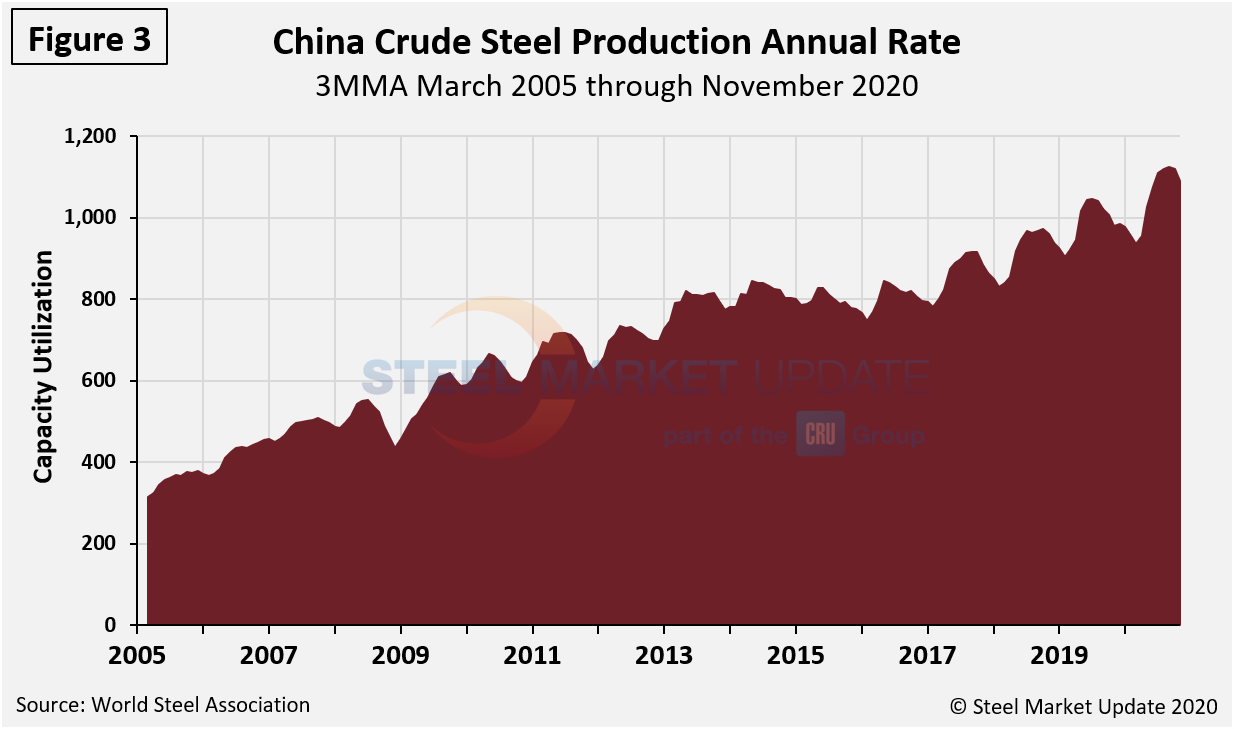
Figure 4 shows the growth of China’s steel production since March 2013 and Figure 5 shows the growth of global steel excluding China both on a 3MMA basis. In September through November, the rest of the world’s production expanded by 4.9 percent as China grew by 11.4 percent, both year over year. This was an abrupt turnaround for the rest of the world, which contracted by 4.6 percent in three months through September. Turkey, Ukraine and Brazil were the main drivers of this increase.
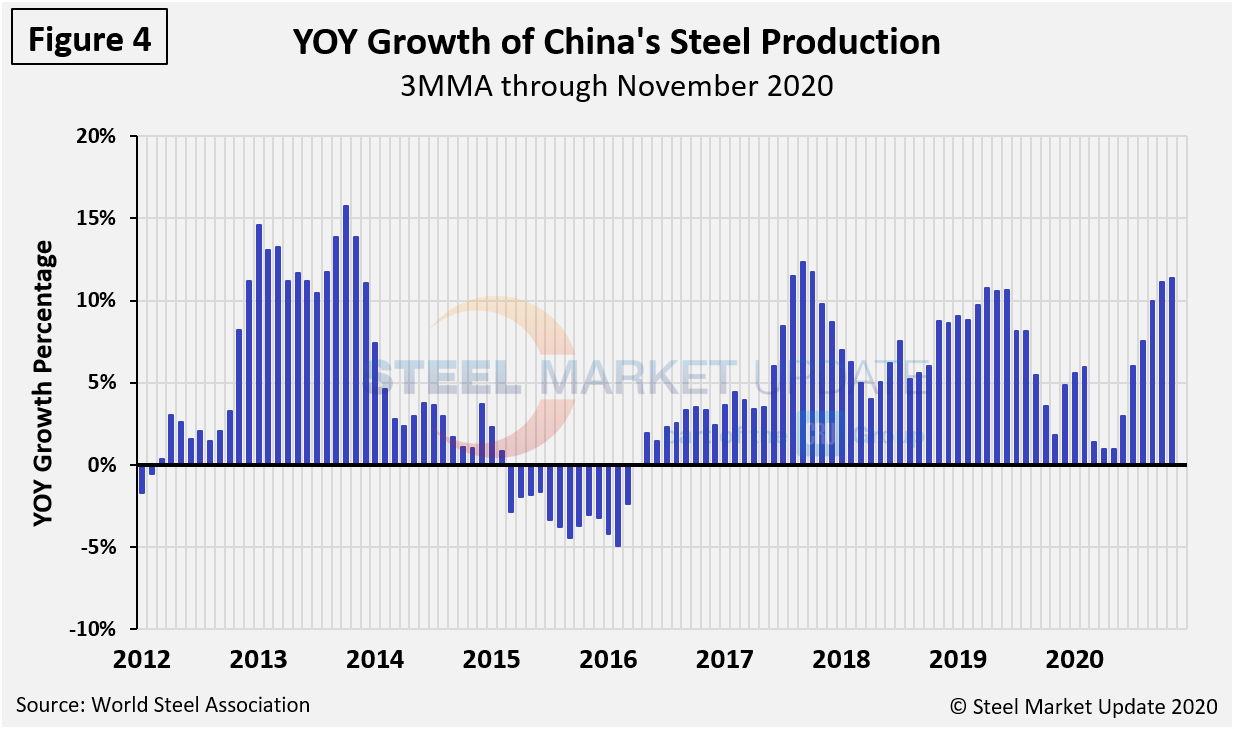
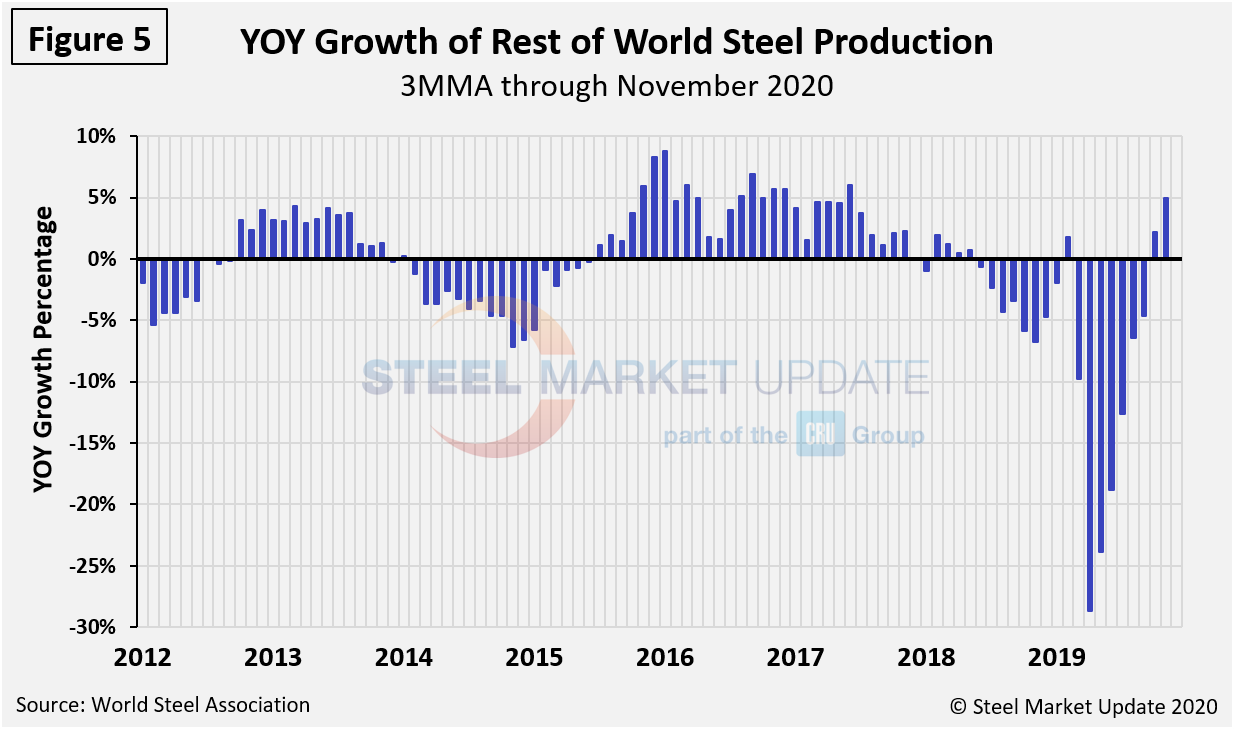
Figure 6 shows China’s share of global steel production, which in the single month of November was 55.4 percent.
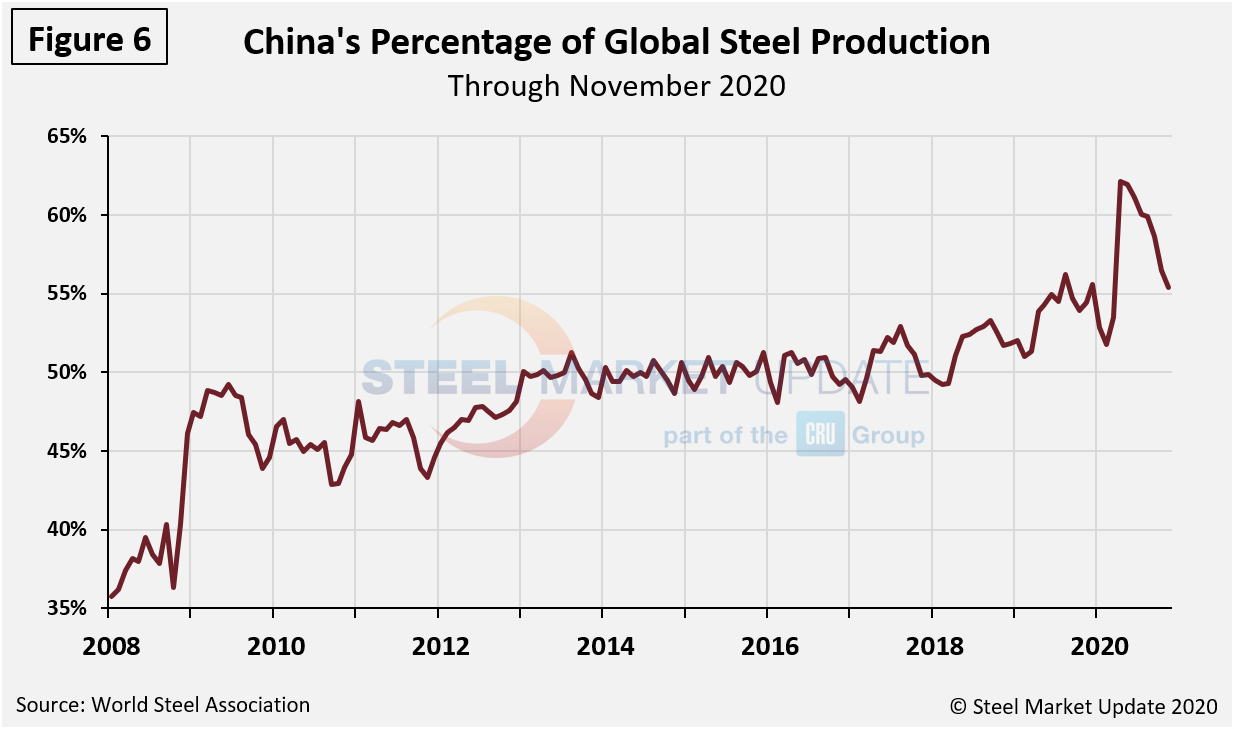
Notes: WSA released their short range forecast on June 4, 2020. They anticipate that global production will be down by 6.4 percent in 2020, but up by 3.8 percent in 2021. On the same basis, North America will be down by 20.0 percent and up by 6.2 percent. WSA represents approximately 85 percent of the world’s steel production, including over 160 steel producers, national and regional steel industry associations, and steel research institutes. The OECD has taken over responsibility for tracking global steel capacity, and their latest update was for 2019, released in June 2020.

Peter Wright
Read more from Peter WrightLatest in Economy

Industry groups praise Senate for passing tax and budget bill
The Steel Manufacturers Association and the American Iron and Steel Institute applauded the tax provisions included in the Senate's tax and budget reconciliation bill.

Chicago PMI dips 0.1 points in June
The Chicago Purchasing Managers Index (PMI) slipped 0.1 points to 40.4 points, in June.

Multi-family pullback drives housing starts to 5-year low in May
US housing starts tumbled in May to a five-year low, according to figures recently released by the US Census Bureau.

Architecture firms still struggling, ABI data shows
Architecture firms reported a modest improvement in billings through May, yet business conditions remained soft, according to the latest Architecture Billings Index (ABI) release from the American Institute of Architects (AIA) and Deltek.

Manufacturing in New York state contracts again
However, companies are growing more optimistic about the future.
